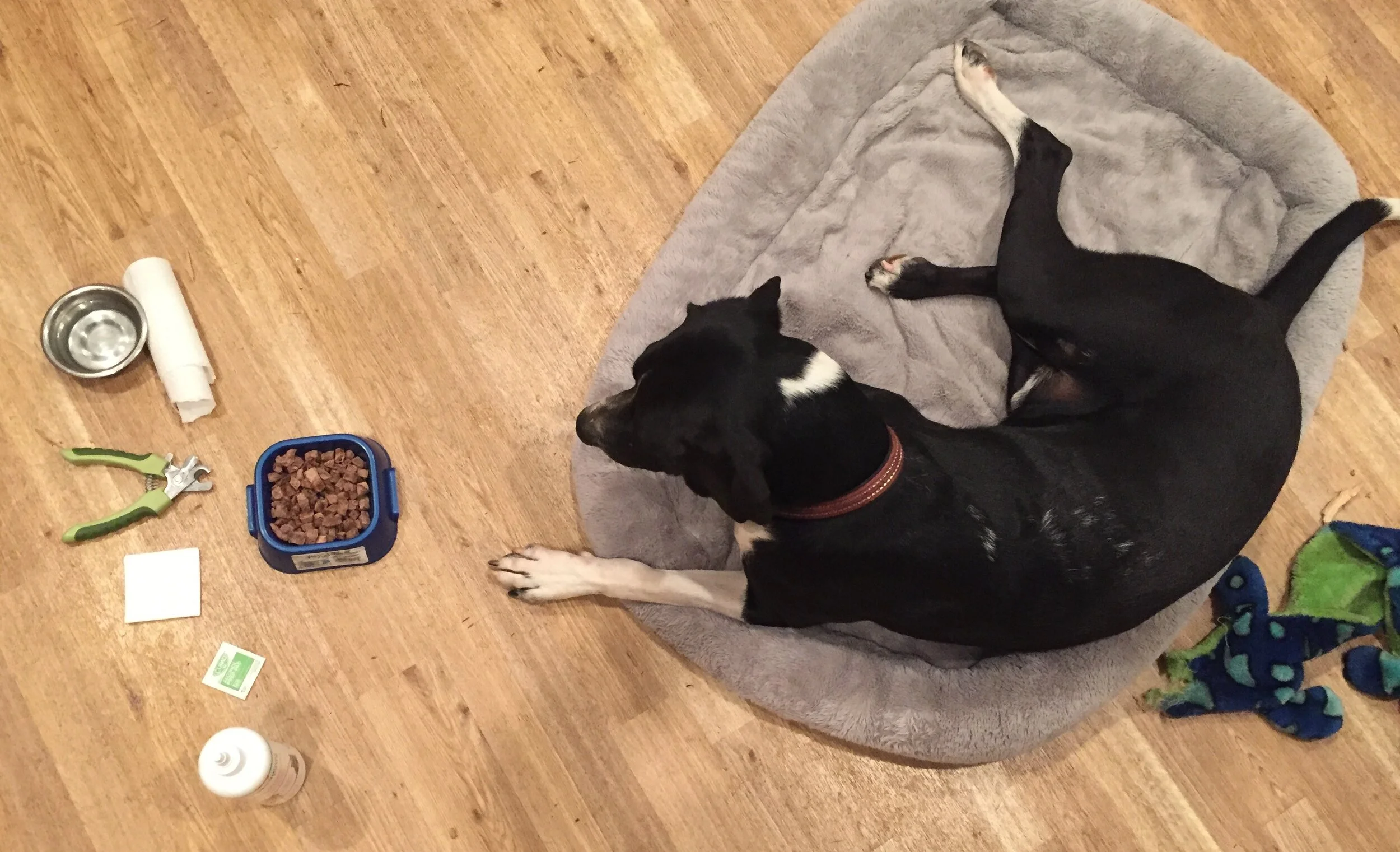The Bucket Game is a way to teach a dog to be calm and hold still for handling. It allows him to give active consent, which prevents defensive or aggressive behavior; there is no need to growl or bite if the dog knows that he can politely ask you to stop at any time. This is a great way to desensitize a fearful dog to grooming or vet care, or prepare a puppy for future handling needs. (See full article on desensitization and counter-conditioning here.)
What is it, exactly?
Note that you don’t need to have a literal small bucket - a bowl or cup is fine - as long as it’s not the same bowl that the dog normally eats from.
More example videos:
Chimera telling us he's ready for cold laser therapy via the Bucket Game.
The Bucket game (English version) (Shows a dog already trained in the game receiving ear ointment)
Grooming with bucket game (Shows training for brushing from first steps)
Puppy Millie getting trimmed around her face
Puppy Coconuts getting used to paw handling
Puppy Coconuts getting used to brushing
Nail Grinding with the Bucket Game (Watch for what is described in the video’s info: “In the beginning of this video, I made a simple mistake that I didn't notice until I watched this. I started her out at the level that I had ended her last session at, instead of lowering my criteria and doing a warm up. She walked away right after to let me know and then notice how long it took for her to loosen up after because I had pushed way too far. The more you go their pace, the looser and more willing they are to play the game = more progress!”)
Written instructions:
Place some treats into a small “bucket” or bowl. Start lowering the bowl toward the ground, 8-12 inches at a time. At each new height, if your dog looks at the bowl but holds still and doesn’t try to help himself, click or say "yes," then hand him a treat from the bowl. Your dog does NOT need to be sitting - standing or lying down is fine. If he tries to go toward the bowl, lift it away, wait for him to hold still, then try again. Repeat until you can place the bowl on the ground and he stays about 1 foot away.
Give a few treats (with a pause between each treat) as your dog continues to look and hold still rather than going for the bowl. If he tries to help himself, lift the bowl away, wait for him to settle, then try again.
Reach toward your dog’s side or back. If he continues to look at the bowl and hold still, click or say "yes," then give him a treat from the bowl. If he looks at you or your hand, pause, wait for him to settle, and retry.
Repeat as above, but with a short pet on your dog’s side, back, or head/neck.
Give longer pets in easy areas (usually back, shoulder, or head/neck), continuing to reward for holding still and resetting if he says “no thanks.”
Practice handling various areas of your dog’s body, using grooming/vet tools as needed. Always let your dog tell you when he’s ready, when he needs a moment, or when he wants a break. Your dog is free to walk away at any time (and if he does, that means that you need to reevaluate your training steps.)
Geyser looks at the “bucket,” with some grooming and vet tools at the ready.

